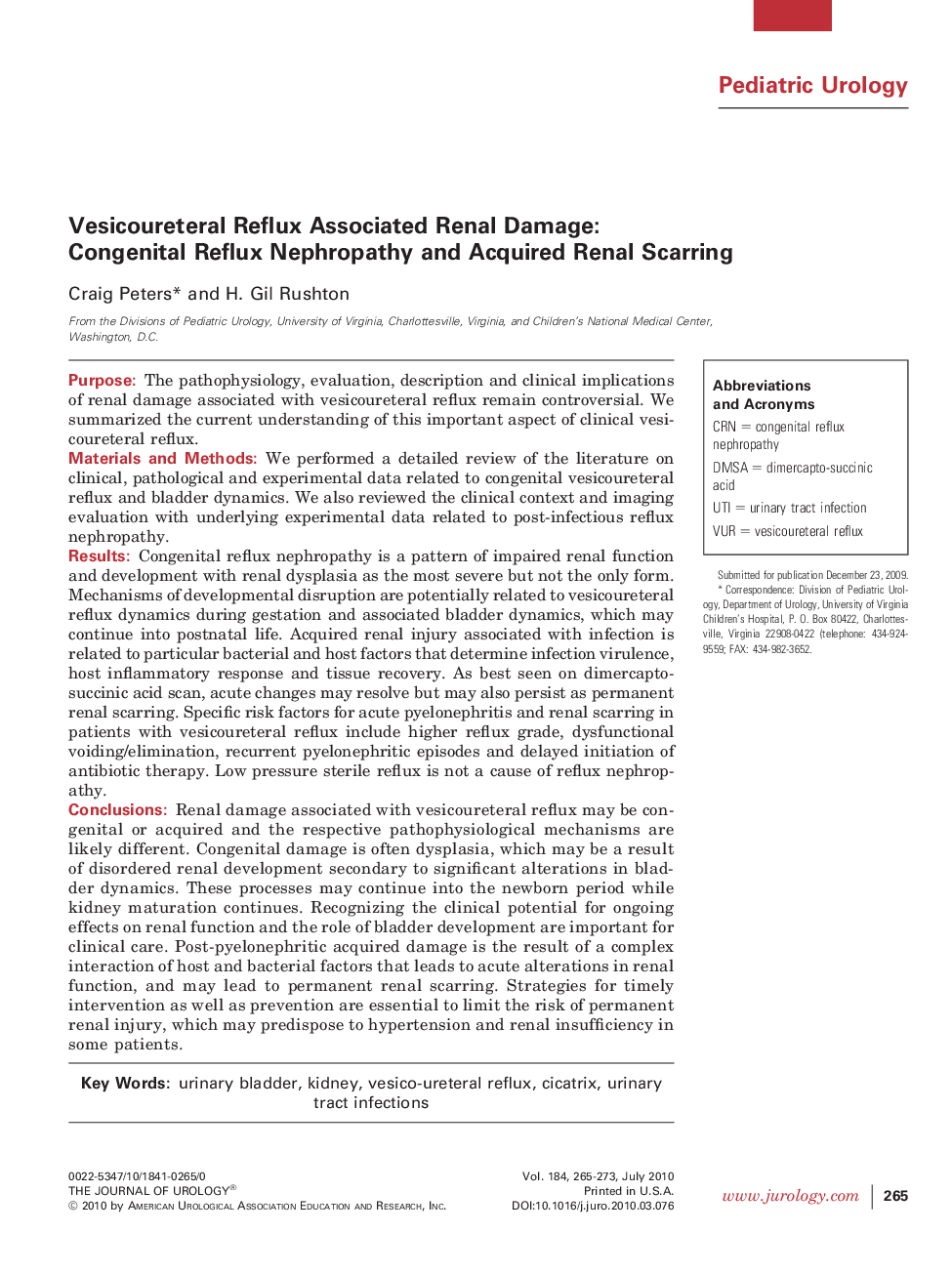| Article ID | Journal | Published Year | Pages | File Type |
|---|---|---|---|---|
| 6160324 | The Journal of Urology | 2010 | 9 Pages |
Abstract
Renal damage associated with vesicoureteral reflux may be congenital or acquired and the respective pathophysiological mechanisms are likely different. Congenital damage is often dysplasia, which may be a result of disordered renal development secondary to significant alterations in bladder dynamics. These processes may continue into the newborn period while kidney maturation continues. Recognizing the clinical potential for ongoing effects on renal function and the role of bladder development are important for clinical care. Post-pyelonephritic acquired damage is the result of a complex interaction of host and bacterial factors that leads to acute alterations in renal function, and may lead to permanent renal scarring. Strategies for timely intervention as well as prevention are essential to limit the risk of permanent renal injury, which may predispose to hypertension and renal insufficiency in some patients.
Keywords
Related Topics
Health Sciences
Medicine and Dentistry
Nephrology
Authors
Caig Peters, H. Gil Rushton,
